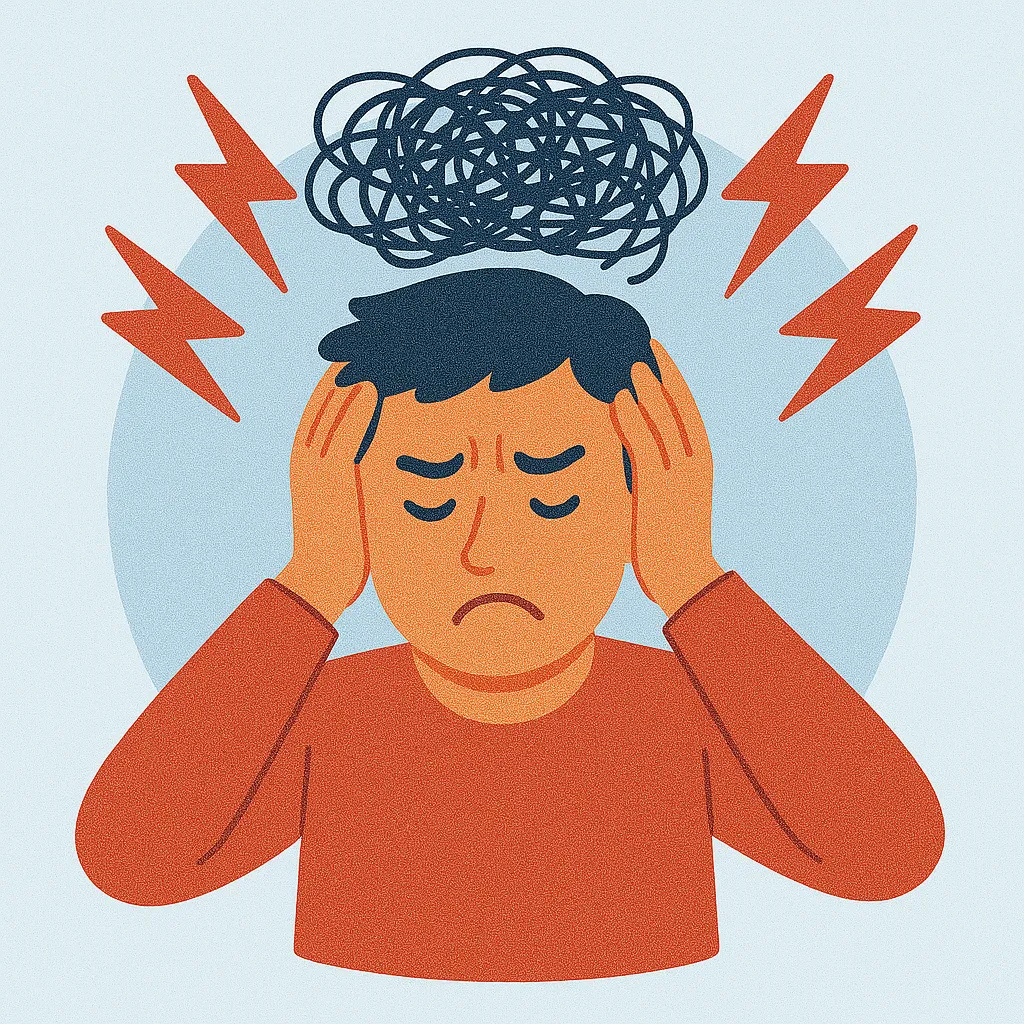What is Anxiety?
Anxiety disorder is characterised by excessive worry or fear that is difficult to control and interferes with daily life. There are several types of anxiety disorders, including generalised anxiety disorder, panic disorder, social anxiety disorder, specific phobias, and separation anxiety disorder, among others.
Symptoms of anxiety can vary depending on the specific type of anxiety disorder, but common symptoms may include excessive worry, restlessness, irritability, difficulty concentrating, muscle tension, sleep disturbances, and physical symptoms such as rapid heartbeat, sweating, and trembling.
Recognising the symptoms of anxiety is crucial to getting proper care and finding relief.

Top 5 Myths About Anxiety
Don’t be Fooled by Fake Quizzes
Feeling constantly on edge or overwhelmed? With so much misinformation online, it’s hard to know what’s normal and what could be a sign of an anxiety disorder. Many online quizzes are vague or unhelpful, leaving you with more confusion than clarity.
We believe everyone deserves access to accurate, professional guidance when exploring their mental health. That’s why our comprehensive Anxiety pre-assessment tool is based on the DSM-5.
Common Symptoms of Anxiety
Anxiety can affect anyone – regardless of age, gender, race or income. Individuals with anxiety may experience a mix of emotional, behavioural, and physical symptoms.
While symptoms vary between types of anxiety disorders, they often manifest during situations that trigger stress or fear, such as public speaking (social anxiety) or fear of separation from a loved one (separation anxiety).
Below are some commonly experienced symptoms of anxiety that you may have encountered at some stage in your life.
Trouble sleeping
Do you have trouble falling asleep, staying asleep, or find it hard to focus during the day?
Tension headaches
Do you experience frequent muscle tension or headaches, especially during stressful moments?
Racing heart
Does your heart race, or do you find yourself sweating excessively, even when you’re not physically active?
Dry mouth or lightheadedness
Do you often have a dry mouth or feel lightheaded and dizzy without an apparent reason?
Stomach issues
Do you frequently feel nauseous or experience stomach discomfort, such as cramps or indigestion?
Tingling or numbness
Have you ever noticed tingling or numbness in your hands and feet, especially during moments of anxiety?
Types of Anxiety Disorders
Each of these anxiety disorders can severely impact daily life if left untreated, but they are manageable with targeted therapies such as Cognitive Behavioural Therapy (CBT), medications like beta blockers or antidepressants, and lifestyle changes. Early diagnosis and treatment are essential to improving outcomes and preventing complications like depression or substance use disorders.
Anxiety and ADHD
Anxiety and ADHD (Attention-Deficit/Hyperactivity Disorder) can frequently co-occur, and research indicates that individuals with ADHD are more likely to experience anxiety disorders. ADHD can lead to challenges with attention, impulsivity, and emotional regulation, which may increase stress and contribute to the development of anxiety. On the other hand, anxiety can worsen ADHD symptoms, making it harder to concentrate and manage tasks. This overlap often results in a complex interplay where both conditions amplify each other, complicating diagnosis and treatment.
How is Anxiety Treated?
In Australia, treatment for anxiety begins with visiting a General Practitioner (GP), who can assess your condition and refer you to mental health services like psychologists, counsellors, or psychiatrists. Through a Mental Health Treatment Plan, Medicare subsidises a limited number of therapy sessions. Common treatments include Cognitive Behavioural Therapy (CBT) to address negative thought patterns and medication, such as beta blockers, which help manage physical symptoms like rapid heartbeat.
Other lifestyle strategies include regular exercise, stress management techniques like yoga or meditation, and avoiding caffeine or alcohol which can worsen symptoms. Building a strong support system and learning time management skills are also helpful tools for managing anxiety in everyday life.
When to Seek Professional Help
If anxiety symptoms become overwhelming or interfere with your ability to function, seeking support from a mental health professional is essential. Treatment plans may include therapy, medication, or both, depending on the severity and type of anxiety disorder. Early diagnosis and intervention improve outcomes, empowering individuals to regain control over their lives.
At YMG, we provide comprehensive resources to guide you through your mental health journey. Whether you’re dealing with general anxiety, panic attacks, or exploring CBT or beta blockers as a treatment option, we aim to equip you with reliable tools and reduce the stigma surrounding mental health.
Take the first step in managing your anxiety symptoms—explore our resources and feel empowered while navigating your mental health journey.
Our free Anxiety quiz is designed to help you determine whether your levels of anxiety in everyday life exceed what is typically experienced by the average person.
*The DSM-5 (Diagnostic and Statistical Manual of Mental Disorders) is the gold standard used by Psychologists and Psychiatrists to diagnose mental health conditions. Created by the American Psychiatric Association, it’s a globally recognised guide that outlines the criteria for conditions like ADHD, Autism, and Bipolar Disorder and more. The most recent edition, the DSM-5-TR, was released in 2022.
DSM-5-TR offers detailed descriptions of various mental disorders, including their symptoms, prevalence, course, and associated features. It serves as a crucial reference for clinicians, researchers, educators, and policymakers in the field of mental health.
This manual helps clinicians accurately identify and diagnose mental health conditions, guiding treatment planning and interventions. It also facilitates communication among professionals by providing a common language and framework for understanding and discussing mental health disorders.
DSM-5-TR is periodically updated to reflect advancements in scientific understanding, changes in diagnostic criteria, and emerging trends in mental health research. It plays a vital role in shaping clinical practice, research initiatives, and public health policies related to mental health and psychiatric disorders.
